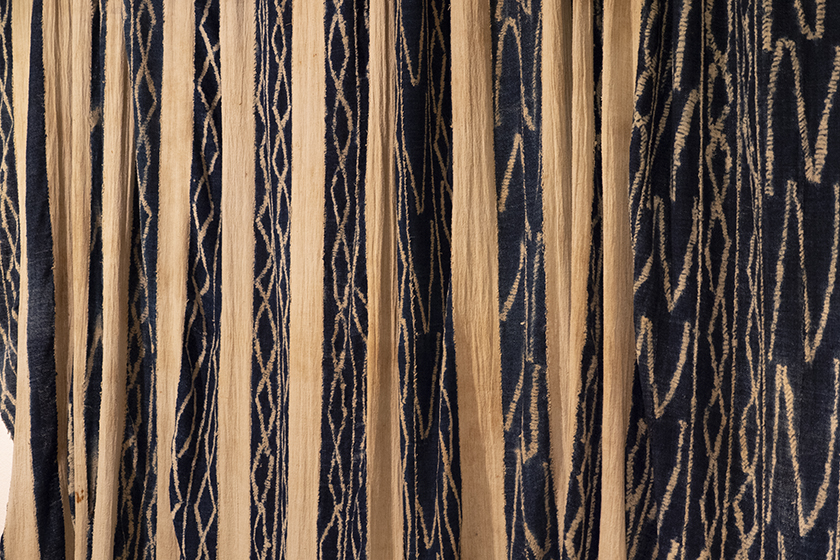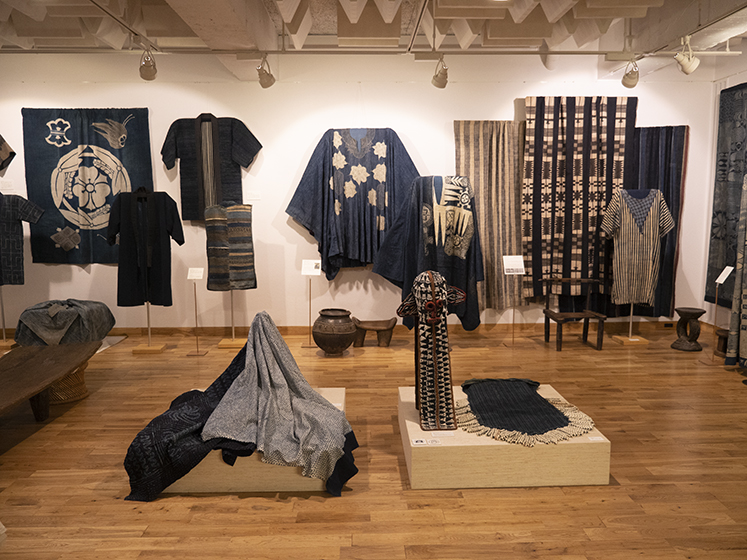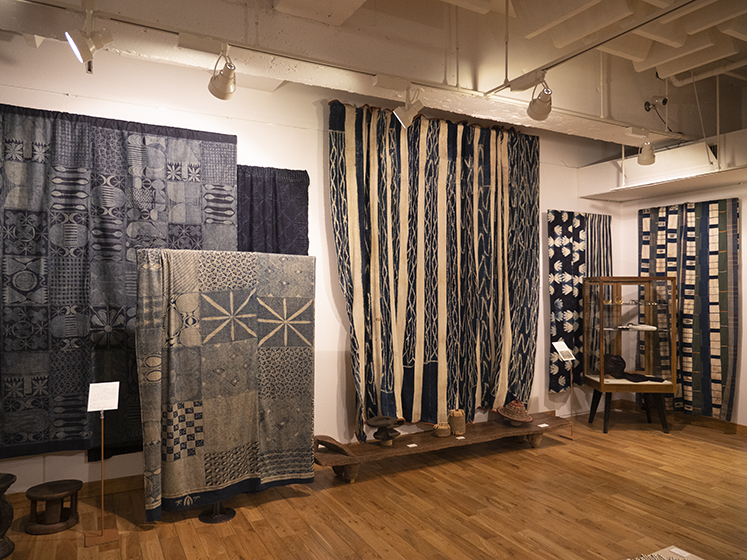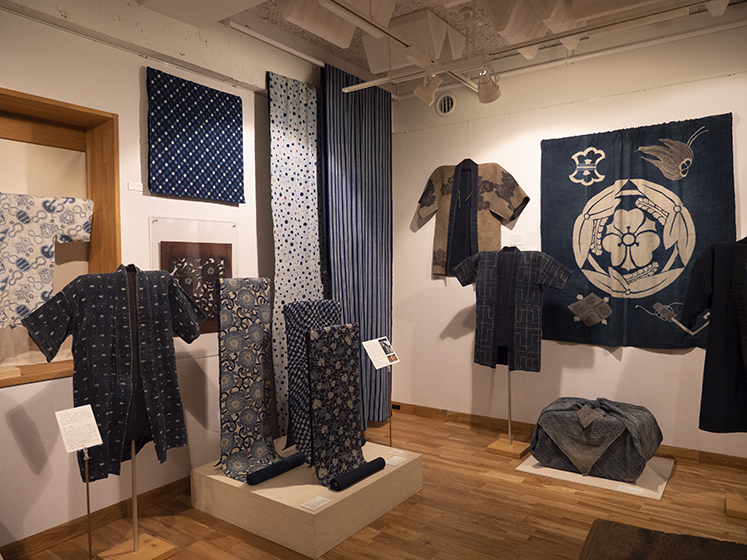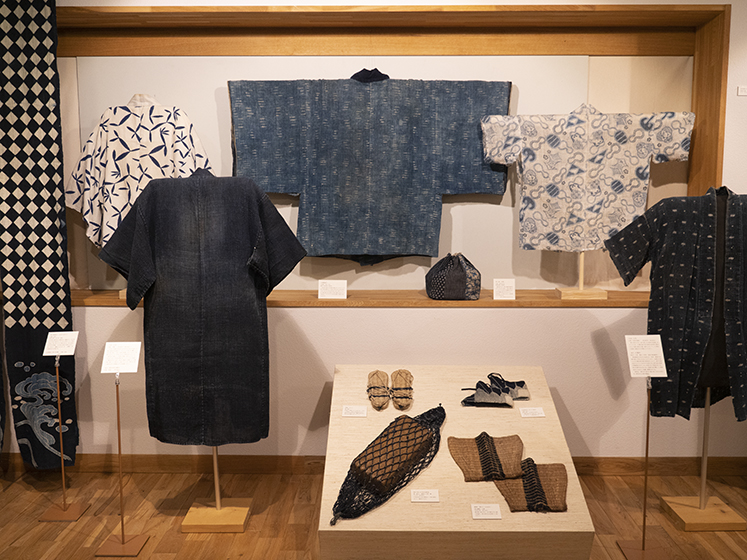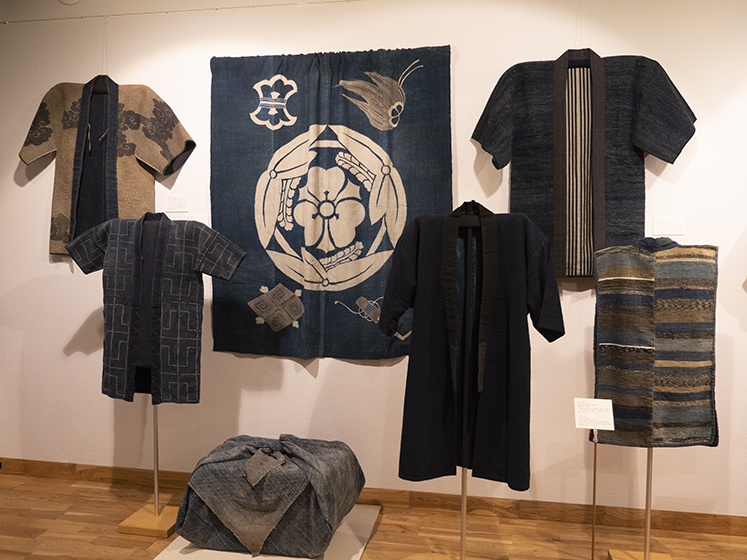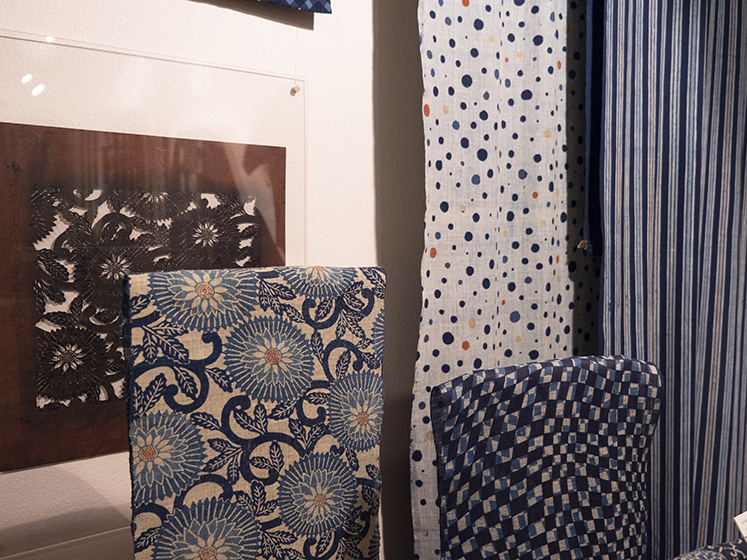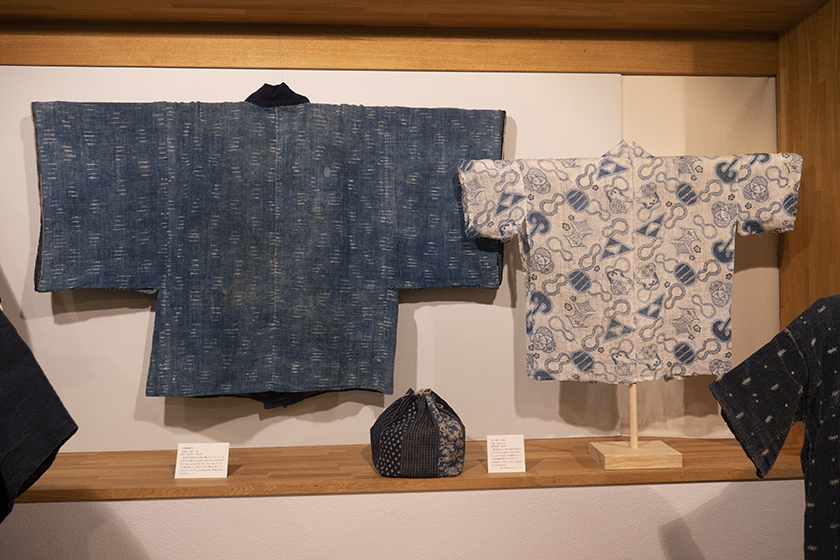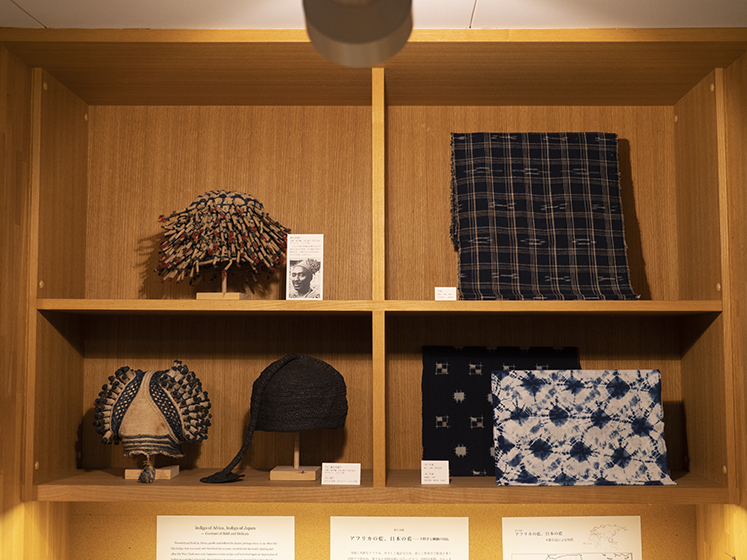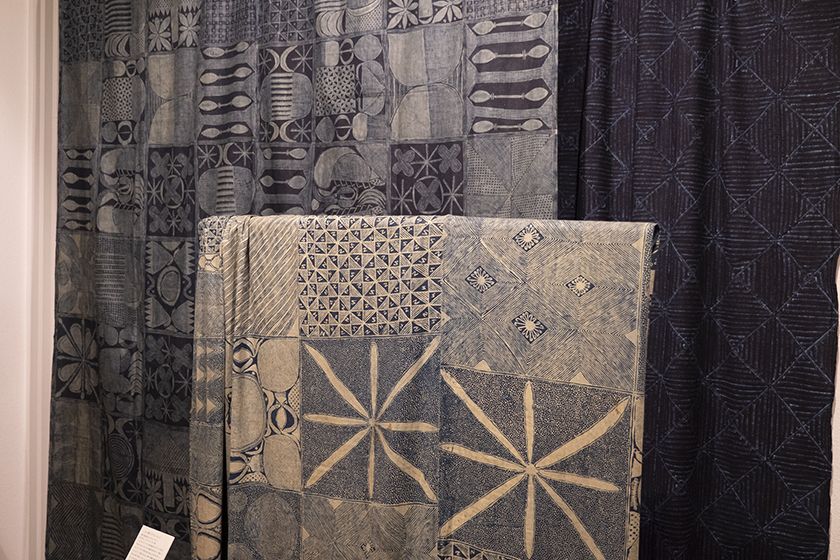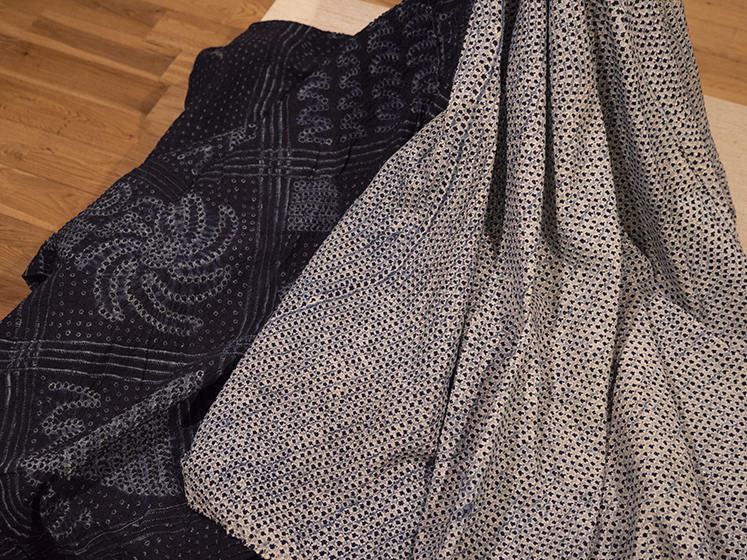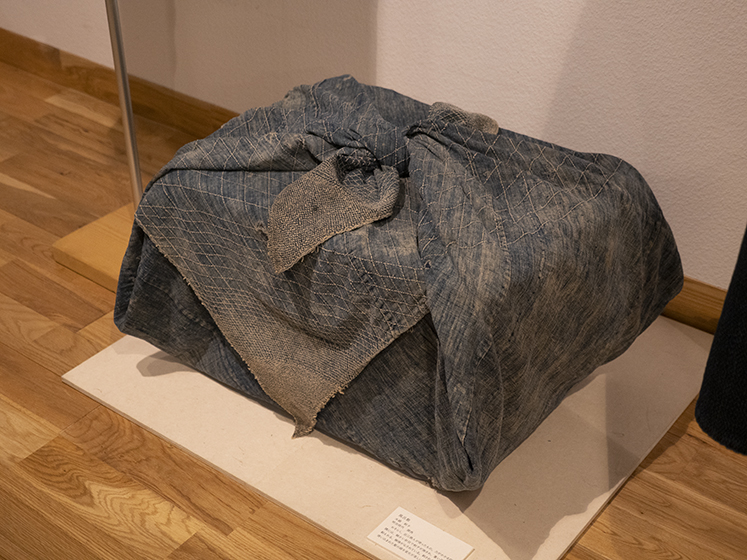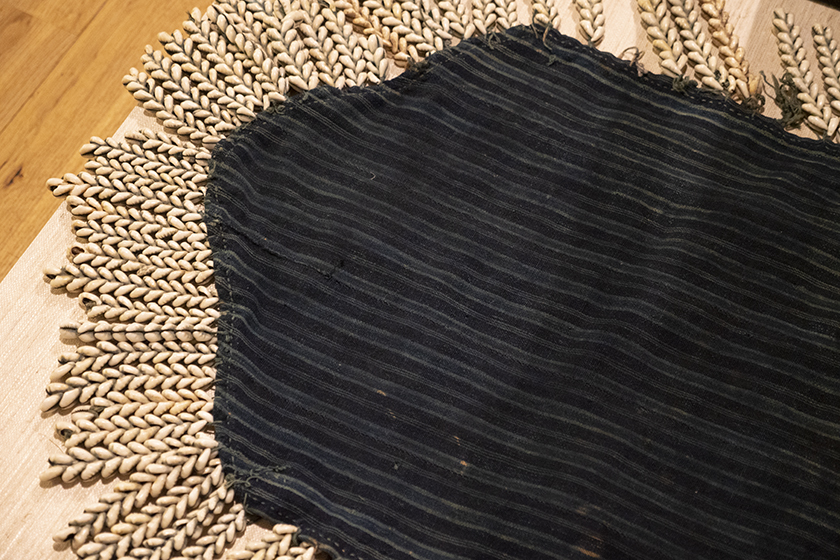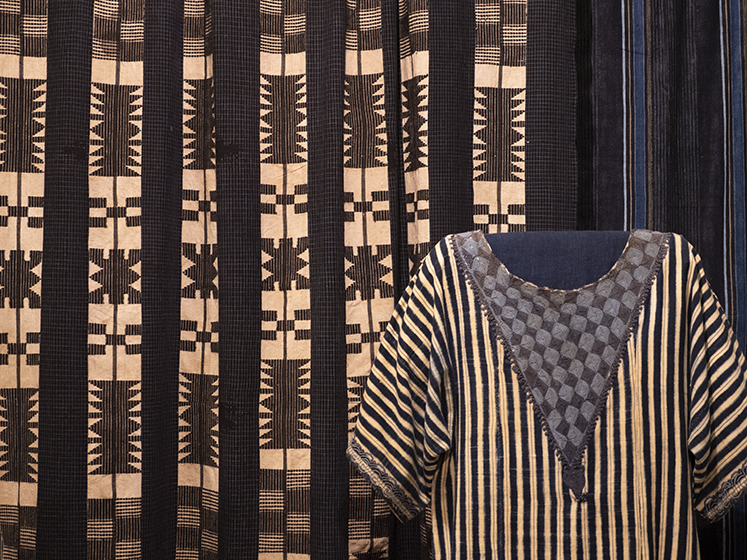Indigo of Africa, Indigo of Japan ― Contrast of Bold and Delicate
August 2 - November 10, 2018
Powerful and bold Africa, gentle and refined Japan; perhaps there are no other dyes like indigo that were used and cherished in so many countries in the world. In September of 2001, I saw a female mummy with blond hair garbed in indigo cloth decorated with white crest-like patterns. It was when a museum just opened in Ürümqi that displayed the excavated mummies in the Taklimakan Desert and this indigo cloth was the oldest indigo I had ever seen. I have visited countries in Asia, Central Asia, Central and South America, and Europe. Wherever I was, I observed that people used indigo for both everyday clothes and for special occasions.
It was about the time when I had almost finished collecting foreign indigo pieces that I started to collect Japanese indigo. During and after the War I had seen only cotton indigo and I had developed an impression of indigo as a symbol of poverty. Nevertheless, foreigners were attracted by tattered and patched indigo cloth used in bedding and cherished them and called them boro [rug in Japanese]. Before long we leaned to see beauty in those patched old cloths.
The planning of this exhibition was prompted by a gift last year from Ms. Tsuda and Ms. Kikuta. This generous gift was the result of their admiration for the wonderful works of indigo craftsman Mr. Akio Tanaka.
African indigo, the art of everyday objects from colonial Africa, made a strong impact on Mr. Hiroshi Ogawa, who kindly agreed to give lecture[s]. Later, he visited Africa himself and brought back exquisite textiles as well as religious and ceremonial items that had never been seen before in Japan. These items include miscellaneous everyday objects and masks for religious ceremonies. It was also an eye-opening experience for me when I saw African textiles for the first time in 1982 and my collection has grown ever since. One should not expect these textiles to be soft, considering that they were produced where harmattan dust storms could cover everything in sand. The sand also got into people’s eyes, mouths, and clothes, paralyzing them. Each of these textiles hide painstaking effort in their free and easy designs. As for references, I would recommend From the Prairie: Thinking in Africa by Junzo Kawada and Out of Africa and Shadows on the Grass by Isak Dinesen on Kamante of the Kikuyu tribe, as well as a volume of photographs, Africa Adorned, by Angela Fisher.
Hiroko Iwatate
